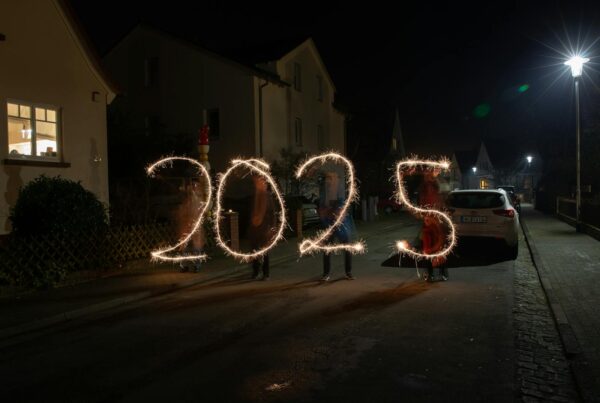Introduction
Today, we’re embarking on an in-depth journey into the unique tapestry of Scottish culture, as depicted through the lens of its public holidays. We’ll explore each of Scotland’s bank holidays in great detail, diving into their historical roots, current celebrations, and the cultural significance they hold for the Scottish people. Strap in for a voyage through time, as we dissect each one in turn: New Year’s Day, 2nd January, Good Friday, Early May bank holiday, Spring bank holiday, Summer bank holiday, St Andrew’s Day (substitute day), Christmas Day and Boxing Day.
Table of Contents
Bank Holidays Scotland 2023
| Date | Day of Week | Name of Bank Holiday |
|---|---|---|
| January 2 | Monday | New Year’s Day |
| January 3 | Tuesday | New Year’s Holiday |
| April 7 | Friday | Good Friday |
| May 1 | Monday | Early May Bank Holiday |
| May 8 | Monday | Coronation of King Charles III |
| May 29 | Monday | Spring Bank Holiday |
| August 7 | Monday | Summer Bank Holiday |
| November 30 | Thursday | St Andrew’s Day |
| December 25 | Monday | Christmas Day |
| December 26 | Tuesday | Boxing Day |
Bank Holidays Scotland 2024
| Date | Day of Week | Name of Bank Holiday |
|---|---|---|
| January 1 | Tuesday | New Year’s Day |
| January 2 | Wednesday | 2nd January |
| March 29 | Friday | Good Friday |
| May 6 | Monday | Early May Bank Holiday |
| May 27 | Monday | Spring Bank Holiday |
| August 5 | Monday | Summer Bank Holiday |
| November 30 | Saturday | St Andrew’s Day |
| December 25 | Wednesday | Christmas Day |
| December 26 | Thursday | Boxing Day |
Bank Holidays Scotland 2025
| Date | Day of Week | Name of Bank Holiday |
|---|---|---|
| January 1 | Wednesday | New Year’s Day |
| January 2 | Thursday | 2nd January |
| April 18 | Friday | Good Friday |
| May 5 | Monday | Early May Bank Holiday |
| May 26 | Monday | Spring Bank Holiday |
| August 4 | Monday | Summer Bank Holiday |
| November 30 | Sunday | St Andrew’s Day |
| December 25 | Thursday | Christmas Day |
| December 26 | Friday | Boxing Day |
New Year’s Day: A Fresh Start with a Scottish Flair
New Year’s Day, falling on the 1st of January, marks the commencement of a new year according to the Gregorian calendar. This is a universal celebration, shared with the rest of the world, but Scotland’s interpretation adds a dash of its own charm to the festivities.
In Scotland, the New Year’s Day celebration is part of the larger Hogmanay festival, which kicks off on New Year’s Eve. Historically, Hogmanay possibly has its roots in the winter solstice among the Norse, as well as the Gaelic celebration of Samhain. The modern day celebrations, however, revolve around public concerts, fireworks, and the famous ‘First Footing.’ This is a unique tradition where the first person to cross a friend or neighbour’s threshold after midnight brings gifts of coal, shortbread, whisky or a black bun to ensure the household’s prosperity in the coming year.
2nd January: An Extended Celebration
While many nations recognise New Year’s Day as a bank holiday, Scotland extends its celebration with an additional bank holiday on the 2nd of January. This extra day of rest is a testament to Scotland’s indulgence in New Year festivities, allowing for a day of recovery before the year officially kicks into gear.
Historically, the 2nd of January became a bank holiday due to Scotland’s unique interpretation of the Julian calendar, where the New Year was observed on the 2nd of January, instead of the 1st. This extra day of rest, like the First Footing tradition, underlines the importance of hospitality, camaraderie and extended celebration in Scottish culture.
Good Friday: Reflections of Faith and Traditions
Good Friday, a movable feast in the Christian calendar, marks the crucifixion of Jesus Christ and his death at Calvary. In Scotland, as in the rest of the UK, this is observed as a bank holiday. This day is filled with church services, prayers, and reflection, with many Scots choosing to engage in the tradition of eating hot cross buns, symbolising the crucifixion.
Historically, Good Friday was a day of fasting and penance, and these practices continue to be observed in many Scottish Christian communities today. The solemnity of the day provides a stark contrast to the joy and celebrations that characterise Easter Sunday, which follows just two days later.
Early May Bank Holiday: Commemorating Workers’ Rights
The Early May Bank Holiday, or May Day, traditionally falls on the first Monday of May. This is a nod to International Workers’ Day and is recognised as a day to celebrate workers’ rights and the labour movement.
The history of May Day in Scotland dates back to ancient times when it was observed as the Celtic festival of Beltane, celebrating the onset of summer. However, the modern day bank holiday is tied to the labour rights movement of the late 19th and early 20th centuries. Rallies and demonstrations are often held on this day, acting as a reminder of the importance of workers’ rights and the role of trade unions in protecting these rights.
Spring Bank Holiday: Welcoming the Onset of Summer
The Spring Bank Holiday, falling on the last Monday of May, is a relatively modern bank holiday. Instituted in 1971, it replaced the Whitsun holiday, which was traditionally celebrated seven weeks after Easter.
This holiday doesn’t have a specific celebration associated with it, unlike many others. However, it is often viewed as a marker of the onset of summer, with many people taking advantage of the typically warmer weather to enjoy outdoor activities or mini-breaks, or even to tend to their gardens. It provides a moment of respite before the bustle of summer truly begins.
Summer Bank Holiday: The Last Hurrah of Summer
The Summer Bank Holiday, observed on the first Monday of August in Scotland (unlike the rest of the UK which celebrates it on the last Monday of August), is the last bank holiday of the summer season. It’s viewed as a chance to enjoy the last vestiges of summer before autumn approaches.
There are no specific traditions linked to the Summer Bank Holiday. It is largely seen as a day to rest and recharge, often spent with family or friends enjoying the hopefully pleasant weather.
St Andrew’s Day: Celebrating Scotland’s Patron Saint
St Andrew’s Day, celebrated on 30th November, pays homage to St Andrew, the patron saint of Scotland. This holiday is unique to Scotland within the UK. St Andrew is not just significant in a religious context, but is also integral to Scottish national identity, with his saltire cross being featured on the Scottish flag.
Historical celebrations include feasting, dancing, music, and the recitation of Scottish poetry. Nowadays, it’s also marked with events showcasing Scottish culture, such as ceilidhs (traditional Scottish dances), special meals, and parades.
If St Andrew’s Day falls on a weekend, the following Monday is observed as a bank holiday. This ‘substitute day’ ensures that the public doesn’t miss out on a day of rest due to the vagaries of the calendar.
Christmas Day: A Cosy Scottish Yuletide
Christmas Day, celebrated on 25th December, is a widespread public holiday around the world, and Scotland is no exception. Scottish Christmas traditions include decorating homes with festive adornments, exchanging gifts, and sharing a special Christmas meal with loved ones.
Historically, Christmas was less prominent in Scotland due to the influence of the Protestant Church, which viewed Christmas as a Catholic holiday. In fact, Christmas was not recognised as a public holiday in Scotland until 1958. Today, however, it’s enthusiastically celebrated, with unique Scottish traditions like the ‘Dance of the Reels’ and the ‘Flambeaux Procession.’
Boxing Day: The Day after the Merry-Making
Boxing Day, on 26th December, offers another day of rest following the excitement and indulgence of Christmas Day. The name ‘Boxing Day’ comes from the historical practice of giving Christmas boxes filled with money or presents to service workers and employees on the day after Christmas.
In Scotland, Boxing Day is a day for relaxation, outdoor activities, or attending football matches. Many also use this day to visit friends and extended family, extending the warmth and goodwill of the Christmas season.
In closing, Scotland’s bank holidays are more than just days off work. They’re a window into the country’s rich history, diverse culture, and unique traditions, offering opportunities for both celebration and reflection. From the global festivities of New Year and Christmas, to the uniquely Scottish celebration of St Andrew’s Day, each holiday brings its own colour and charm to the Scottish calendar.





